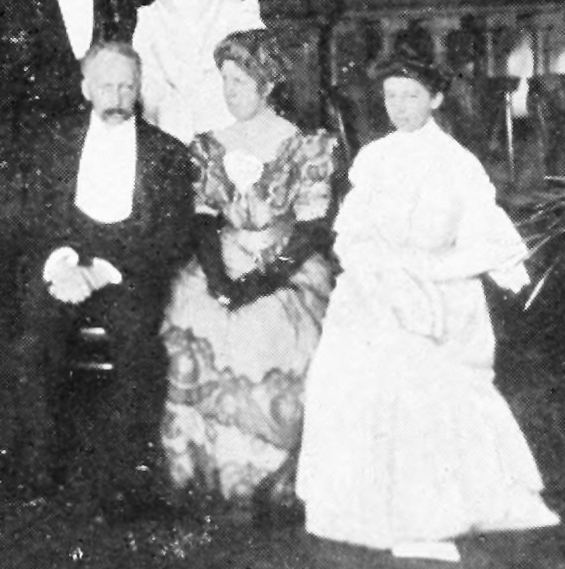Name Florence Durham Died June 25, 1949 | Fields Genetics | |
 | ||
Born 6 April 1869London, England ( 1869-04-06 ) Institutions Royal Holloway College, Froebel Institute, Newnham College and National Institute for Medical Research Institution Royal Holloway, University of London, Froebel College | ||
Florence Margaret Durham (6 April 1869 – 25 June 1949) was a British geneticist at Cambridge in the early 1900s and an advocate of the theory of Mendelian inheritance, at a time when it was still controversial. She was part of an informal school of genetics at Cambridge led by her brother-in-law William Bateson. Her work on the heredity of coat colours in mice and canaries helped to support and extend Mendel's law of heredity. It is also one of the first examples of epistasis.
Contents
- Early life and career
- William Bateson and the Newnham College Mendelians 19001910
- Epistasis
- Medical Research Council
- Later life
- Scientific publications
- References
Early life and career
Florence Margaret Durham was born in London, one of six daughters of surgeon Arthur Edward Durham (1833–1895) and his wife Mary Ann Cantwell. Arthur Durham was an alcoholic and his wife was strongly opposed to alcohol.
In 1891, Florence Durham started a second class honours degree in Physiology at Girton College. She lectured in Biology at Royal Holloway College and the Froebel Institute in London from 1893 to 1899. She also lectured in physiology at Newnham College. From 1900 to 1910, she was a demonstrator in Physiology at the Balfour Laboratory.
Towards the end of the 19th century, female students were still facing resistance from Cambridge academics, including a move by some scientists to prevent them from taking introductory biology courses. A letter from Durham published in the Girton Review called on the women's colleges Girton and Newnham to "encourage advanced and research work and thus to show the world that women mean to do serious work and have higher aims in view than mere success in examination." The colleges responded to this and other pressure by raising money for more research fellowships.
Florence Durham's sister Beatrice first became engaged to William Bateson in 1889, but at the engagement party, Bateson was thought to have had too much wine, so Mrs. Durham prevented her daughters' engagement. Beatrice and William finally married in June 1896, by which time Arthur Durham had died and his wife had either died (according to Henig) or had somehow been persuaded to drop her opposition to the marriage (according to Cock).
William Bateson and the Newnham College Mendelians, 1900–1910
During this period, Gregor Mendel's work on inheritance was rediscovered and caused a bitter controversy between its supporters – William Bateson and his group of Mendelians – and its opponents, who included Walter Frank Raphael Weldon (Bateson's former teacher) and Carl Pearson. Weldon's group were known as the Biometrics.
Bateson's group at Cambridge was very unusual for its time, in that it was made up mainly of women. It was there that Florence Durham, Rebecca "Becky" Saunders and Muriel Wheldale performed work to show that complex traits could be explained by Mendel's law of segregation. Bateson's wife Beatrice was also actively involved in his research. Florence Durham joined the group as a post-graduate research student who had already published research.
After Bateson accepted a position as director of the new John Innes Horticultural Institute, which opened in Surrey in 1910, Florence Durham moved there to work with him on plant genetics, including a study of primrose hybrids.
Epistasis
Beatrice Bateson wrote in her memoir that her sister Florence "hybridised mice in a kind of attic over the Museums". The problem of the heredity of mice coat colours first eluded Mendelian explanation. Florence Durham challenged the prevailing view of Lucien Cuénot. He proposed that it was the combination of factors which explained the different colours of mouse coats.
Durham invoked the concept of epistasis to explain the relationship between different factors. The term "epistasis" was coined by William Bateson, and Durham invoked it to explain how genes could interact in a more complex way than the simple dominant and recessive characteristics identified by Gregor Mendel. She wrote, "the terms 'dominant' and 'recessive' should only be applied to express relationship between factors in the same allelomorphic pair".
Medical Research Council
From 1917 until her retirement in 1930, Durham worked for the Central Research Laboratory (now the National Institute for Medical Research), in its Division of Biochemistry and Pharmacology, working under Henry Dale. Her work mainly focused on neosalvarsan, an organoarsenic compound that was used to treat syphilis. She and her colleague Miss Marchal were responsible for ensuring that preparations of neosalvarsan met the quality standard and issuing licences on behalf of the Board of Trade.
In 1932, Durham published the results of a long-term experiment into the genetic effects of alcohol on guinea pigs, conducted at NIMR. The study was done in response to reports by American researcher Charles Rupert Stockard that the offspring of alcohol-exposed guinea pigs exhibited defects attributable to the parents' alcohol exposure. After breeding 6,983 guinea pigs over the course of several years, Durham found no evidence that daily doses of alcohol had any hereditary effects; the percentage of offspring born with genetic defects was no higher among the intoxicated guinea pigs than among the control group. This was one of several studies that discredited the Lamarckian theory of inheritance that Stockard's work appeared to support.
Later life
In her later years, Durham lived at Hawkern Otterton near Budleigh Salterton, Devon. She died on 25 June 1949, at The University Women's Club, London.
Scientific publications
Durham's scientific publications include:
